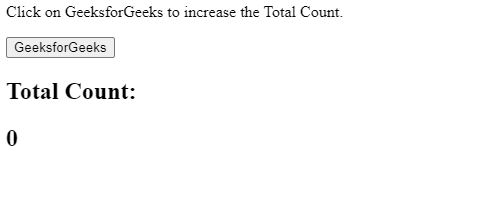AngularJS Events
Last Updated :
09 Aug, 2022
An Events in AngularJS can be used to perform particular tasks, based on the action taken. Both Angular Event & the HTML Event will be executed & will not overwrite with an HTML Event. It can be added using the Directives mentioned below:
- ng-mousemove: The movement of the mouse leads to the execution of the event.
- ng-mouseup: Movement of the mouse upwards leads to the execution of the event.
- ng-mousedown: Movement of the mouse downwards leads to the execution of the event.
- ng-mouseenter: Click of the mouse button leads to the execution of the event.
- ng-mouseover: Hovering the mouse leads to the execution of the event.
- ng-cut: Cut operation leads to the execution of the event.
- ng-copy: Copy operation leads to the execution of the event.
- ng-keypress: Press of key leads to the execution of the event.
- ng-keyup: Press of upward arrow key leads to the execution of the event.
- ng-keydown: Press of downward arrow key leads to the execution of the event.
- ng-click: Single click leads to the execution of the event.
- ng-dblclick: Double click leads to the execution of the event.
- ng-blur: Fired when an HTML element loses its focus.
- ng-change: It is used whenever the value of an input element changes.
- ng-focus: It is used to apply custom behavior when an element is focused.
- ng-paste: It is used to specify custom behavior functions when the text in input fields is pasted into an HTML element.
- ng-mouseleave: It is used to apply custom behavior when a mouse-leave event occurs on a specific HTML element.
Example 1: This example illustrates action on the occurrence of any Mouse Movement Event. This includes events of dragging the mouse to cause movement of the cursor on the screen.
HTML
<!DOCTYPE html>
<html>
<head>
<script src=
</script>
</head>
<body>
<p>
Move the mouse over GeeksforGeeks
to increase the Total Count.
</p>
<div ng-app="App1"
ng-controller="Ctrl1">
<h1 ng-mousemove="count = count + 1">
GeeksforGeeks
</h1>
<h2>Total Count:</h2>
<h2>{{ count }}</h2>
</div>
<script>
var app = angular.module('App1', []);
app.controller('Ctrl1', function($scope) {
$scope.count = 0;
});
</script>
</body>
</html>
|
Output:

ng-mousemove Directive
Example 2: This example shows the $event obj for calling the function on Mouse Movement Event. Here, the $event object enables the occurrence of a mouse movement event.
HTML
<!DOCTYPE html>
<html>
<head>
<script src=
</script>
</head>
<body>
<p>
Mouse over GeeksforGeeks to display
the value of clientX and clientY.
</p>
<div ng-app="App1"
ng-controller="Ctrl1">
<h1 ng-mousemove="myFunc($event)">
GeeksforGeeks
</h1>
<h4>Coordinates: {{x + ', ' + y}}</h4>
</div>
<script>
var app = angular.module('App1', []);
app.controller('Ctrl1', function($scope) {
$scope.myFunc = function(gfg) {
$scope.x = gfg.clientX;
$scope.y = gfg.clientY;
}
});
</script>
</body>
</html>
|
Output:

ng-mousemove Directive
Example 3: This example shows the action being performed for On Click Event. Here, the click of the mouse button leads to the performance of some action.
HTML
<!DOCTYPE html>
<html>
<head>
<script src=
</script>
</head>
<body>
<p>
Click on GeeksforGeeks to
increase the Total Count.
</p>
<div ng-app="App1"
ng-controller="Ctrl1">
<button ng-click="count = count + 1">
GeeksforGeeks
</button>
<h2>Total Count:</h2>
<h2>{{ count }}</h2>
</div>
<script>
var app = angular.module('App1', []);
app.controller('Ctrl1', function($scope) {
$scope.count = 0;
});
</script>
</body>
</html>
|
Output:

ng-click Directive
Like Article
Suggest improvement
Share your thoughts in the comments
Please Login to comment...